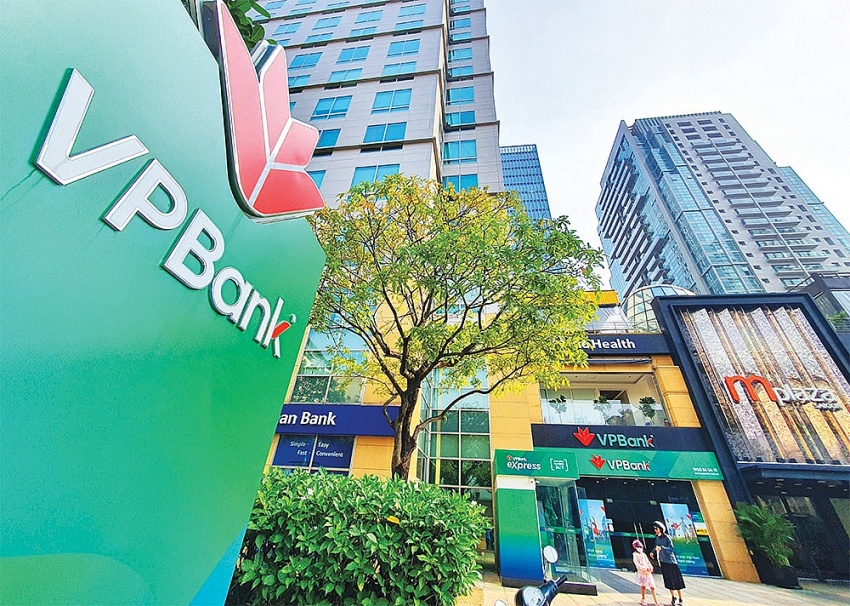Lenders to benefit from refinements
The State Bank of Vietnam (SBV) in late December issued Circular No.22/2023/TT-NHNN, a significant regulatory adjustment which redefines the capital adequacy ratio for banks and foreign bank branches, set to take effect on July 1.
 |
| Some financial groups set to gain from risk mitigation adjustments, Photo: Le Toan |
A pivotal change is the recalibration of the credit risk coefficient for specialised industrial real estate project financing. This adjustment from 200 per cent to 160 per cent risk coefficient represents a strategic shift in the approach to real estate financing, particularly for industrial projects. Other real estate ventures will maintain the 200 per cent risk ratio.
It also revises the credit risk coefficient for loans secured by social housing or government-supported projects, lowering it to 20-50 per cent, compared to the standard 25-100 per cent for regular mortgages.
“In line with the approved compulsory transfer plans, banks undergoing compulsory transfer and other credit institutions will benefit from a zero risk coefficient for specific loans and deposits,” the circular notes.
Moreover, it introduces a 50 per cent risk coefficient for receivables from personal loans aimed at agricultural and rural development, aligning with government credit policies.
According to Viet Capital Securities, the inclusion of international financial institutions as legitimate guarantors in Circular 22 is a strategic move to diversify risk mitigation tools. VCSC added that the move is a proactive step by the SBV, encouraging banks to channel resources into priority sectors such as agriculture.
Particularly, banks specialising in social housing loans, industrial real estate, and agricultural financing, particularly Vietcombank, VietinBank, and BIDV, stand to gain significantly.
“With the revised risk coefficients, banks will be required to allocate fewer reserves, potentially liberating substantial funds for additional lending. This development is a boon for the credit supply chain, potentially boosting bank profitability,” noted MB Securities (MBS).
“Vietcombank, VietinBank, and BIDV are poised to leverage this, which we believe could be a catalyst for credit growth amidst the current challenges in net interest margins,” cited an MBS report.
Economist Can Van Luc agreed that implementation of differentiated risk coefficients across various real estate categories is a move that could significantly impact both the banking sector and the broader economy.
“It’s imperative that the Ministry of Construction spearheads the segmentation of the real estate market. This will enable the SBV and the Ministry of Finance (MoF) to apply tailored risk coefficients, ensuring a more resilient and responsive banking sector.”
The discussion around varied risk coefficients has also resonated with executives. Nguyen Duc Vinh, CEO of VPBank, said, “Real estate is a pivotal sector in our economy. The current one-size-fits-all approach to risk coefficients, especially the high 200 per cent for certain segments, needs re-evaluation. A more balanced risk assessment could be a catalyst for market vitality.”
This sentiment is echoed in the broader financial community, where the application of distinct risk coefficients is seen as aligning with international standards like Basel II.
One industry expert said, “Adjusting risk coefficients for specific segments is not only timely but also aligns with global best practices. This is particularly relevant as Vietnam’s economy is on a recovery path, and such measures can significantly aid in the growth of businesses.”
However, Luc also cautioned about delays in adoption of these measures. “The absence of a comprehensive classification system for real estate segments may prolong the process for institutions to adapt and implement these risk coefficients. The urgency is to establish this framework before the new circular becomes effective in six months,” he said.
Last week, the MoF also initiated a consultation process on a draft circular intended to abolish a range of existing circulars within the banking and finance sector. The draft proposed complete revocation of half a dozen legal documents dated 2012-2018 on issues such as valuation services, government bonds, export credit loans, and more.
 | Lenders making waves to take on new loan prospects Some Vietnamese banks are increasingly courting foreign investors and exploring favourable loan opportunities from international organisations. |
 | Lenders integrate a greener perspective Some major Vietnamese banks are intensifying their focus on sustainable practices by dedicating significant funds to renewable energy projects and reducing interest rates for eco-friendly initiatives. |
What the stars mean:
★ Poor ★ ★ Promising ★★★ Good ★★★★ Very good ★★★★★ Exceptional
Related Contents
Latest News
More News
- Tax sector wraps up 2025 and sets priorities for next year (December 25, 2025 | 14:00)
- A tipping point for digital and hybrid wealth management in Vietnam (December 23, 2025 | 13:33)
- $250 million deal targets women-owned SMEs, sustainable agriculture (December 22, 2025 | 17:40)
- Stock market posts resilient 2025 performance (December 19, 2025 | 18:17)
- Citi Vietnam receives 2025 AmCham CSR recognition (December 19, 2025 | 16:35)
- As global green supply chain reshapes, will Vietnam be left behind? (December 19, 2025 | 08:00)
- Banks gear up for massive capital increases (December 18, 2025 | 17:04)
- Securing capital and efficiency for Vietnam’s 2026-2030 growth ambitions (December 17, 2025 | 10:00)
- Energy sector in need of blended finance mechanisms (December 17, 2025 | 09:00)
- Vietnam still has room to mobilise capital for sustainable growth (December 17, 2025 | 08:57)

 Tag:
Tag:





















 Mobile Version
Mobile Version